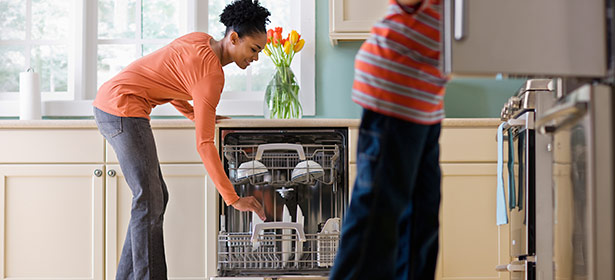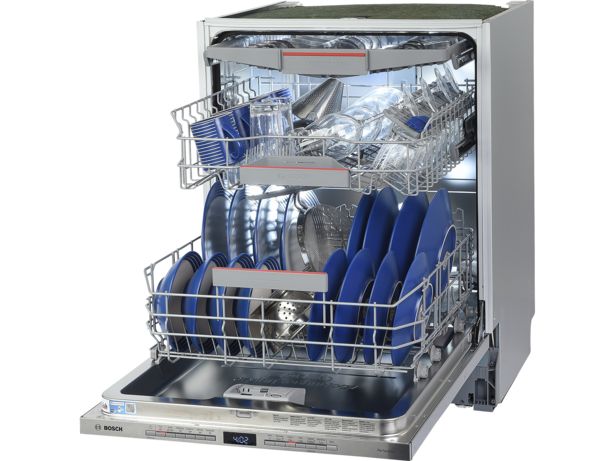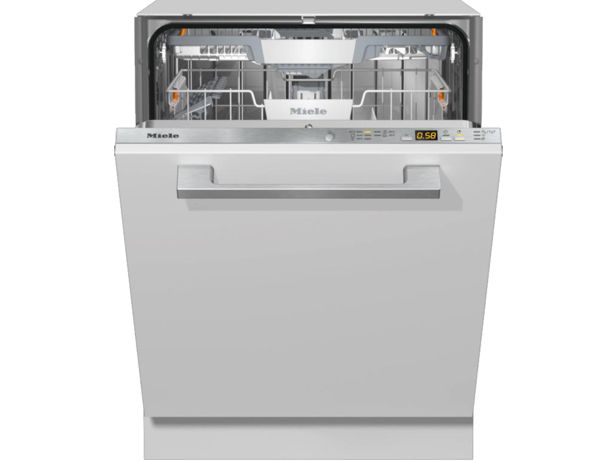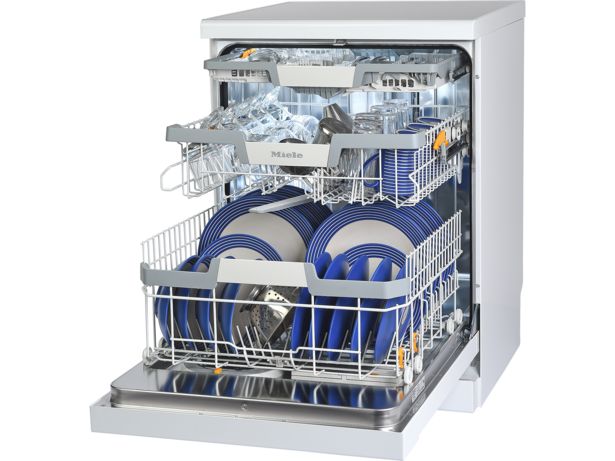Dishwasher programs explained

Modern dishwashers have an array of programs to choose from. The one you select will have a big impact on the time it takes to wash your dishes, how economically it washes them and the quality of cleaning.
To help you navigate them, we'll tell you what each program is good for and which ones aren't worth bothering with. Plus, learn about the extra settings that let you customise your dishwasher programs.
You can also go straight to our round-up of the best dishwashers.
Main or normal dishwasher program
When to use? Every day.
Why? This program is well suited to cleaning your everyday dirty dishes.
Main or normal programs usually wash between 55ºC and 65ºC. You'll find one on almost all dishwashers except a few budget models.
We test every dishwasher's main program on how well it can clean, and the differences may surprise you – the best ones leave every item spotless, while the worst ones will leave you cleaning last night's dinner off by hand.
See our dishwasher reviews to find out which pass the test with flying colours.
Automatic dishwasher program or ‘sensor wash’
When to use? Every day.
Why? Auto programs use a sensor to detect how dirty the dishes are, then automatically sets the water temperature, amount of water used and wash duration to match.
In theory, this should help get everything clean when tough stains need a more intense wash. In cases where there are only light stains, this program should save you money, as it should take less time, powder and water to get dishes sparkling.
Energy-save or eco dishwasher program

When to use? Every day, for less soiled dishes.
Why? It uses less energy and water than normal or automatic programs – usually 20-40% less.
This will probably be the most environmentally friendly way to wash your dishes, and now comes as standard on all modern dishwashers, even the most basic.
Your energy-save or eco program uses less water and washes at lower temperatures. But it's not the program to choose if you're in a rush, as it will take longer than the main program.
When we test dishwashers, we measure how much energy and water they use so we can tell you how much each model will cost to run a year. The most energy-efficient full-sized dishwasher could save you £300 over its lifetime.
We test every dishwasher's eco program and give it a star rating. Take a look at our guide to the most energy-efficient dishwashers.
Fast, rapid or ‘speedy’ dishwasher program
When to use? For lightly soiled dishes when you're in a hurry.
Why? It’s great when you don't have time on your side, as it will take less time than any other wash. But it's often only recommended for light stains.
In recent years, we’ve seen a huge uptake of the 'fast' wash, with more and more dishwashers including it in their repertoire.
It's intended for lightly soiled dishes that need a quick clean, and can take anywhere from 15 minutes up to about an hour – so check before you buy if you want one with a super-speedy wash.
Intensive dishwasher program

When to use? For heavily-soiled dishes.
Why? It uses a higher temperature and a greater volume of water to clean heavier stains and grime, but – as you'd expect – it will also use more energy.
Intensive dishwasher programs are great for very dirty pots, pans and dishes that would normally need soaking. But you need to factor in the higher resource cost (energy and water) if you decide on this program.
Not every dishwasher comes with an intensive program – if you don't plan on using yours for really dirty items, you could probably do without it.
Delicate/glassware dishwasher program

When to use? For glassware, including wine glasses, champagne flutes and china.
Why? It uses a lower temperature to gently clean delicate items.
The lower temperature will put these items under less stress and should help minimise the risk of breakages. To help avoid chipping, make sure china and glass items don’t rest on each other when you're loading the dishwasher.
- See more on how to load your dishwasher.
Pre-wash or pre-rinse
When to use? If you’re going to leave items in your dishwasher for a few days before cleaning them.
Why? This program is for times when you have heavily soiled dishes and want to rinse off excess food and grime. It doesn't clean dishes.
It's useful if you only put your dishwasher on every few days and don’t want to leave plates with food in there until the next wash.
You don’t need to use this program if you plan on washing dishes straightaway, as most main dishwasher programs will include a rinse at the start to whisk away leftover dirt and food. Remember, though, you should always scrape plates and bowls of large pieces of food before putting them in the dishwasher.
Self-clean or maintenance
When to use? Every few months.
Why? This program will clean at a high temperature to shift dirt and clean the inside of your machine.
Some dishwashers come with a self-cleaning program, which you're supposed to run when the dishwasher is empty. This will help your dishwasher last longer by keeping it in good condition, reducing the risk of draining problems.
Depending on the model of dishwasher you have, you'll be advised on whether or not to use cleaner for this. If in doubt, check your manual first.
Find out more on how to clean a dishwasher.
Less popular programs you might find useful

Half-load
If you don't have a lot to wash, consider using the half-load program.
It's a handy feature, although it can still use up to 90% of the water and energy used in a full load. So if running costs and energy are important to you, it's worth waiting until your dishwasher is full and then using the energy-save program.
Silent or quiet
Silent or quiet programs are more and more common in premium dishwashers. They claim to reduce the noises made during the filling and washing cycles, which is handy if you live, say, in an open-plan home, or one with poor soundproofing between neighbours.
Steam, hygiene or baby protect
In some dishwashers, these are an intensive wash combined with a rinse that includes a burst of heat up to 70°C. In others, it can just be the higher temperature short-burst rinse you get at the end of a normal program.
Two-stage
Two washes – one after the other – but in a single program, this promises an extra intense clean. It's aimed at very dirty dishes, such as a greasy baking tray after a roast.
Two-zone
If you want to divide your dishwasher into zones with two levels of cleaning, this program offers a gentle wash of the top rack – usually for glasses – combined with a more intense wash on the bottom rack, for pans and tough grime.
Common extra settings

More dishwashers are coming along now with extra settings that let you customise your program choice even more, for a variety of purposes – from time saving to extra-dry. These are the most common:
- Energy saving or eco setting Will reduce the energy and water of your program choice. Sometimes it will increase the length of the program.
- Time saving setting Speeds up the program, but usually at the expense of how well it cleans or dries.
- Extra-dry setting Extends the drying stage. It will use up more energy, but could be useful when washing lots of plastic tubs or saucepans, when water can easily get stuck in nooks and crannies.
- Extra-hygiene setting Increases the temperature or length of the program to give a more intense wash. Sometimes promoted as ideal for households with young children or allergy sufferers.
- All-in-one detergent setting This is to tell your dishwasher that you’re using an all-in-one or three-in-one dishwasher detergent tablet.
To find out more about which dishwasher to buy, and which features you can and can't do with, read our guide on how to buy the best dishwasher.



